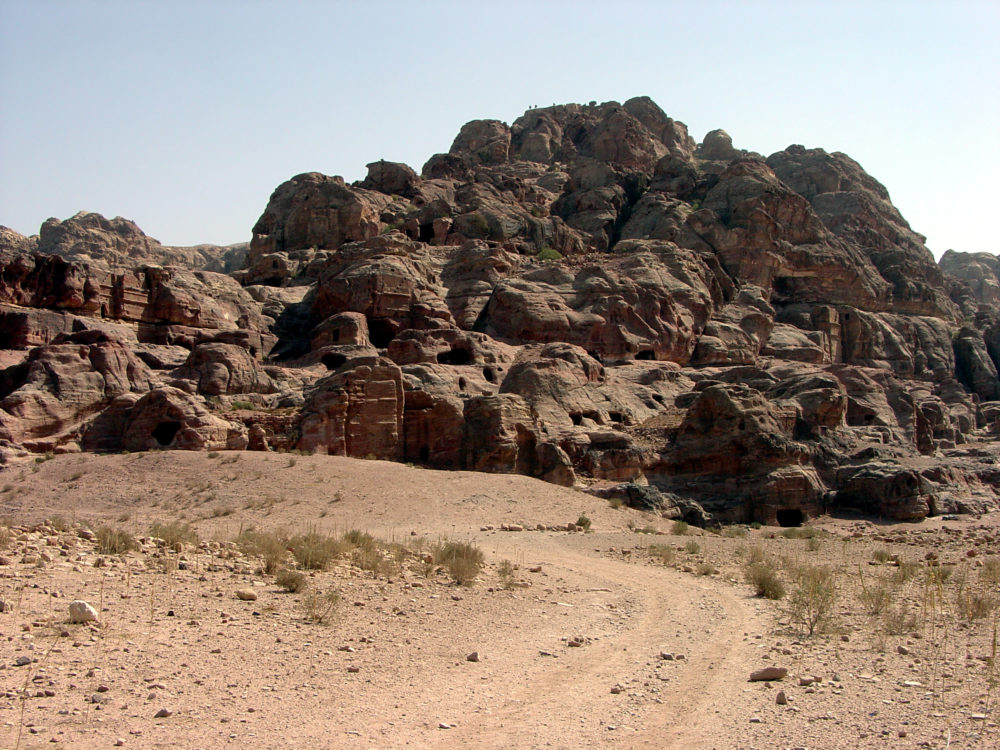Jebel al-Madhbah Mountain in Petra, Jordan

The theory of the Mountain of the Altar (Jebel al-Madhbah) being Mount Sinai was first proposed by Ditlef Neilson in his 1927 book,"The Site of the Biblical Mount Sinai: A Claim for Petra."
The mountain is located in a valley known as the “Valley of Moses” (Wadi Musa). While the significance of tradition should not be dismissed, there are other valleys named “Wadi Musa” in other Middle Eastern countries like Saudi Arabia, which reduces the credibility of this claim. With multiple valleys claiming to be the valley of Moses, determining which is really the path down which the Israelites traveled becomes a rather difficult project.
Supporters of the mountain’s candidacy as Mount Sinai point to indications that the mountain may have been covered with blue slate at one point, fitting the Exodus story’s description of God appearing to Moses on a part of Mount Sinai that looked like paved sapphire, or lapis lazuli, stone.
However, it has also been argued that the words translated as sapphire stone are likely not the sapphires that we think of today, as sapphire mining did not begin until the time of the Roman Empire.[1] It is also unclear from the book of Exodus if Moses was describing a permanent feature of Mount Sinai or if he was describing one of the visual effects of God's supernatural presence.
Spring of Moses
There is a tradition that a location near Jebel al-Madhbab is the place where God instructed Moses to strike a rock and caused water to pour out for the Israelite followers. This tradition appears to have begun in the 13th century when Arab chronicler Numaris identified the area as “the Spring of Moses” (Ain Musa).
This site has gained only a few proponents since its proposal nearly one hundred years ago.
Bibliography
[1] New World Encyclopedia, Mount Sinai. http://www.newworldencyclopedia.org/entry/Mount_Sinai#cite_ref-cheyne_1-5
